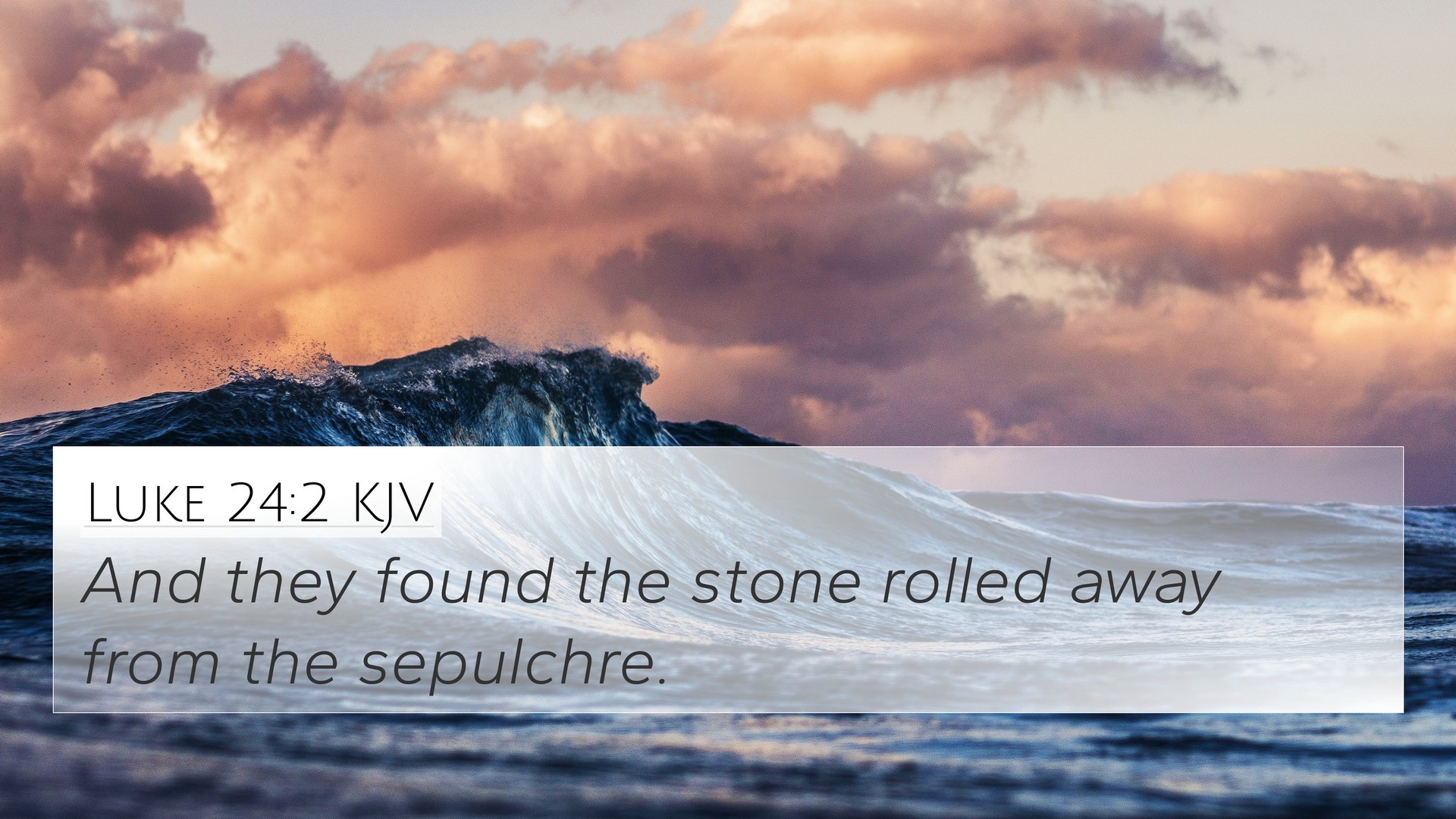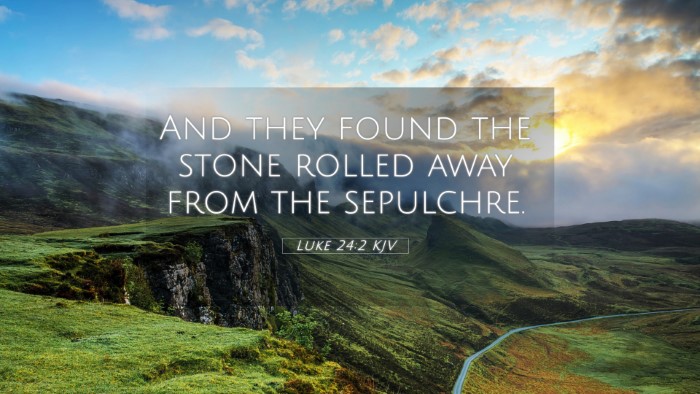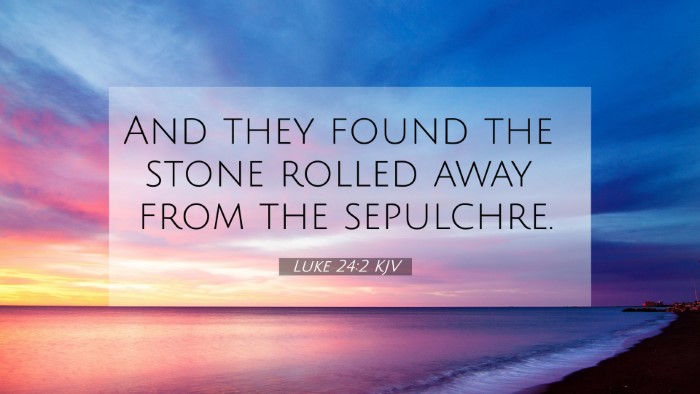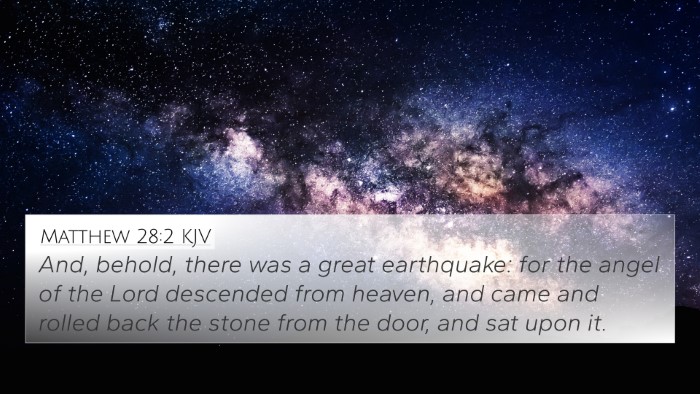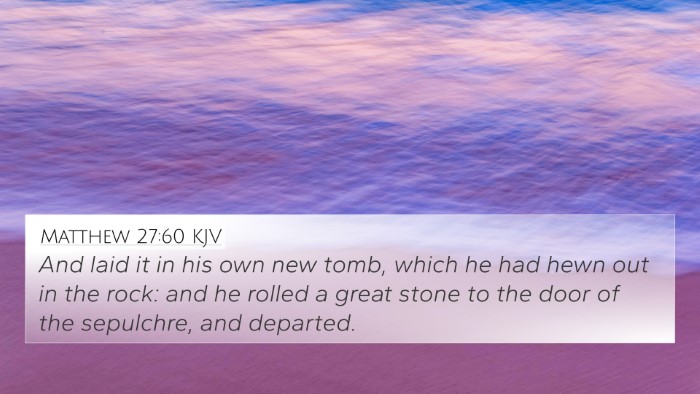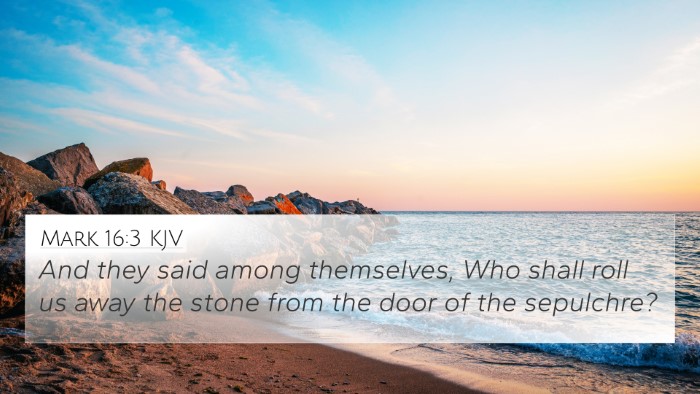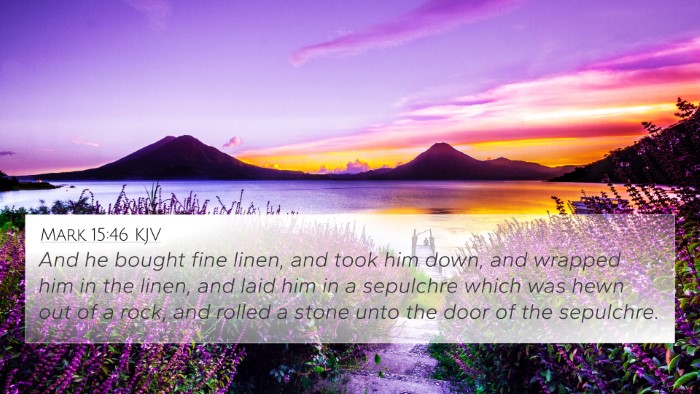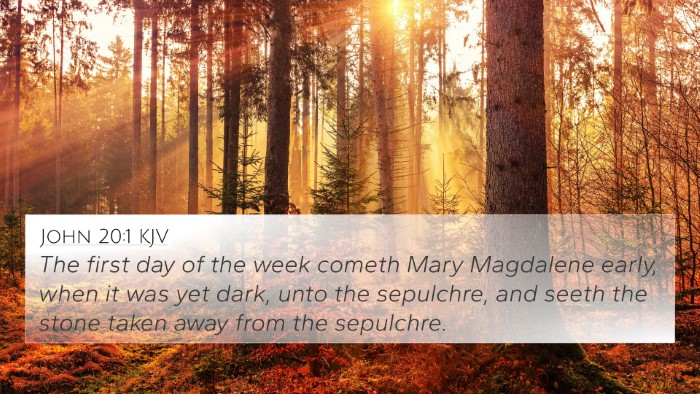Understanding Luke 24:2
Bible Verse: Luke 24:2 - "And they found the stone rolled away from the tomb."
Meaning and Interpretation
This verse marks a pivotal moment in the Christian narrative, indicating the resurrection of Jesus Christ. The act of finding the stone rolled away signifies not just a physical event but also a spiritual revelation of hope and new life.
Insights from Public Domain Commentaries
- Matthew Henry: Henry emphasizes that the resurrection is a cornerstone of the Christian faith, showcasing God's power over death. The stone being rolled away highlights that Christ's resurrection happened not merely through human effort, but through divine intervention.
- Albert Barnes: Barnes notes the historical and theological significance of the empty tomb. The stone's removal fulfills Jesus' prophetic declarations about His resurrection and serves as a confirmation of His deity and the promise of eternal life for believers.
- Adam Clarke: Clarke explores the narrative, mentioning the despair of the disciples prior to this event. The discovery of the empty tomb represents a turning point, transforming sorrow into joy and fear into faith.
Cross-References to Luke 24:2
Understanding the connections between this verse and others enhances its meaning. Here are some relevant cross-references:
- Matthew 28:2: "And behold, there was a great earthquake; for an angel of the Lord descended from heaven and came and rolled back the stone and sat on it." – This verse parallels the event of the stone being rolled away and adds details of divine activity.
- Mark 16:4: "But when they looked up, they saw that the stone had been rolled away, for it was very large." – Mark’s account corroborates the fact of the stone's removal and the attention to its size signifies significant barriers being overcome.
- John 20:1: "Now on the first day of the week Mary Magdalene came to the tomb early, while it was still dark, and saw that the stone had been taken away from the tomb." – This verse reinforces the presence of Mary at the tomb, depicting a continuity in the resurrection narrative.
- Acts 2:24: "God raised him up, loosing the pangs of death, because it was not possible for him to be held by it." – This emphasizes God's active role in the resurrection and its significance as a fulfillment of prophecy.
- Romans 6:4: "We were therefore buried with him through baptism into death in order that, just as Christ was raised from the dead through the glory of the Father, we too may live a new life." – Here, the theme of resurrection extends beyond Christ, indicating believers’ new life through Him.
- 1 Corinthians 15:55-57: "O death, where is your victory? O death, where is your sting?" – This offers a theological reflection on the victory over death through Christ's resurrection, reinforcing the hope presented in Luke 24:2.
- Philippians 3:10-11: "That I may know him and the power of his resurrection, and may share his sufferings, becoming like him in his death, that by any means possible I may attain the resurrection from the dead." – This connects the concept of resurrection with the believer’s personal experience and desire for transformation.
Thematic Connections
Luke 24:2 opens various thematic connections throughout the Bible:
- Resurrection: This verse highlights the theme of resurrection found throughout the New Testament, emphasizing the victory over sin and death.
- Faith and Doubt: The disciples' journey from disbelief to faith parallels accounts in both the Old and New Testaments, reflecting the common struggle humans face in believing divine promises.
- Divine Intervention: The supernatural events surrounding the resurrection underline God’s continual engagement with humanity.
- Hope: The discovery of the empty tomb symbolizes the hope offered to all believers, connecting with Old Testament prophecies of restoration and new life.
Tools for Bible Cross-Referencing
For deeper study and understanding of related verses, consider using:
- Bible Concordance
- Bible Cross-Reference Guide
- Cross-Reference Bible Study Guides
- Bible Reference Resources
- Comprehensive Bible Cross-Reference Materials
Conclusion
Luke 24:2 serves as a crucial text for understanding the resurrection's impact on Christian faith. By examining this verse through the lens of cross-references and scholarly insights, readers can appreciate the richness of the biblical narrative and the hope it provides.
